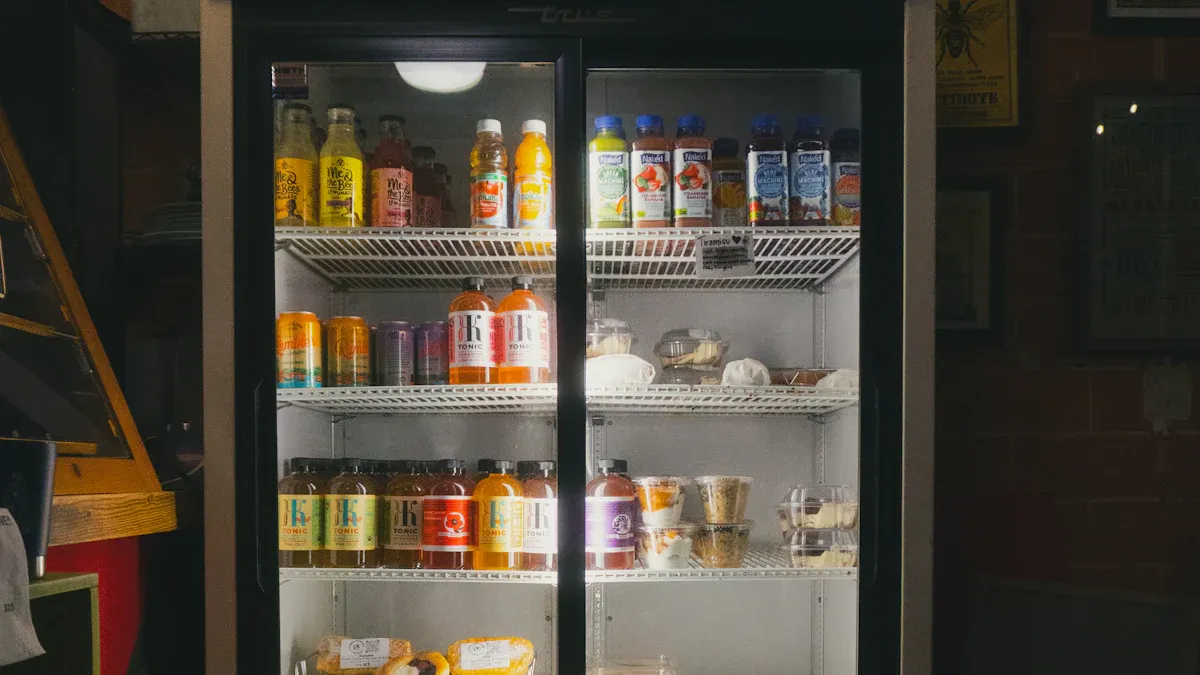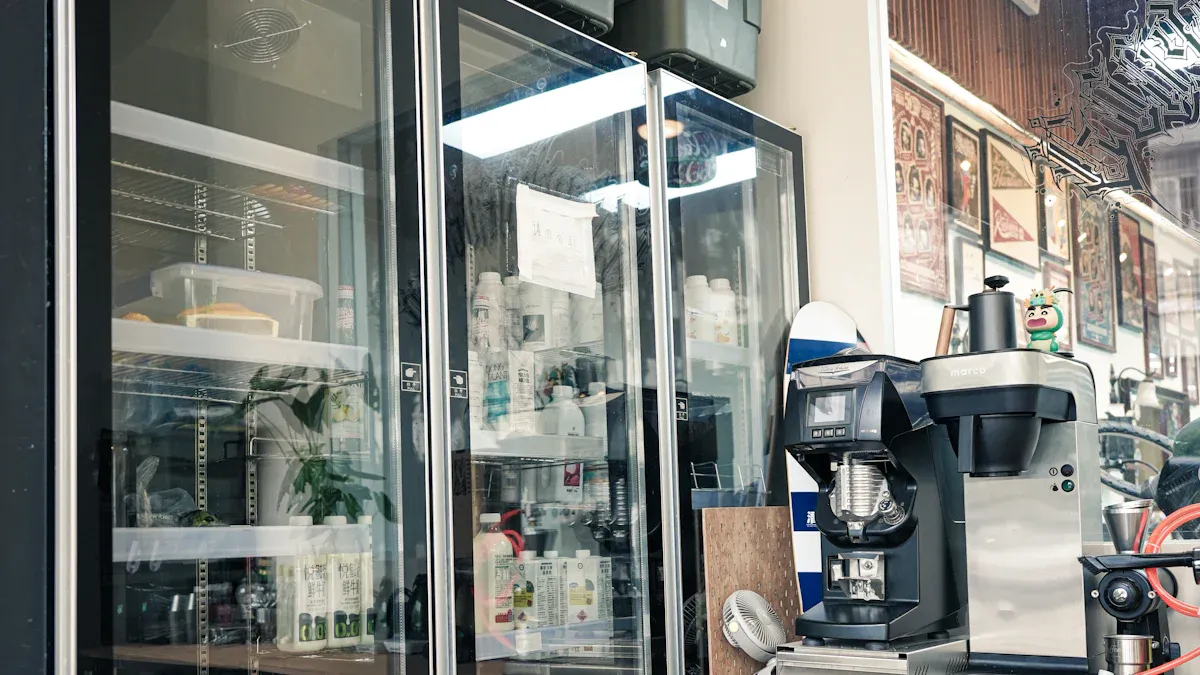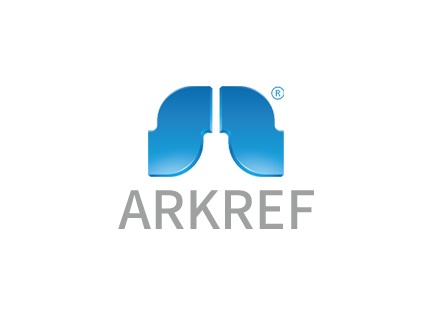What Is a Walk-In Cooler and How Does It Work

A walk in cooler is a big, insulated fridge. You use it to keep food safe and fresh. You can find this cooler in restaurants and grocery stores. Other places that serve food also use it. The cooler keeps food cold so it does not go bad. You need the cooler to keep food at 41°F or lower for cold holding, as shown in the table:
Temperature Range | Purpose |
|---|---|
41°F or below | Cold holding |
Above 135°F | Hot holding |
135°F to 41°F | Rapid cooling (within 6 hours) |
The cooler helps you keep food safe from bad germs. It also helps food last longer.
Key Takeaways
Walk-in coolers keep food safe by staying at 41°F or lower. This stops food from going bad or getting germs. Regular care, like checking seals and cleaning evaporators, helps stop big problems. It also keeps food fresh. Picking the right size and features for a walk-in cooler can help your business work better. It can also save you money. Using coolers that save energy lowers your costs. It also helps the planet when you store food. Checking temperature logs often makes sure you follow food safety rules. It also helps you find problems early.
Walk-In Cooler Basics

What Is a Walk-In Cooler
You see walk-in coolers in many places that store food. A walk in cooler looks like a large room with thick walls. You step inside and feel cold air all around you. The cooler keeps food fresh and safe by holding a steady temperature. You use walk-in coolers for storing meat, dairy, fruits, and vegetables. Many restaurants and grocery stores rely on these coolers every day. You can find walk-in coolers in schools, hospitals, and hotels. The cooler helps you keep food from spoiling. You open the door, walk inside, and organize your supplies on shelves. Walk-in coolers come in different sizes to fit your needs.
Key Features
Walk-in coolers have special features that help you store food safely. You notice thick insulated panels on the walls. These panels keep cold air inside the cooler. The door seals tightly so warm air cannot get in. You control the temperature with a simple thermostat. Walk-in coolers use strong refrigeration systems to keep the air cold. You can choose a cooler that fits your space and business. Some walk-in coolers have custom panels for extra durability. You find coolers with easy-to-clean floors and bright lights. You can pick a cooler size that matches your inventory. Here is a table showing common sizes for walk-in coolers:
Size | Dimensions (L x W) | Ideal Use |
|---|---|---|
Small | 10' x 6' | Perfect for tight spaces or smaller events. |
Medium | 12' x 7' | Most popular size, great for catering and medium-sized businesses. |
Large | 16' x 7' | Built for major events and significant inventory overflow. |
Tip: You should check the cooler’s temperature often to keep food safe.
Walk-in coolers help you save money by reducing food waste. You keep your supplies organized and easy to find. The cooler protects your food from heat and moisture. You can trust walk-in coolers to keep your business running smoothly.
Walk-In Cooler Components

Insulated Panels
Insulated panels cover every wall in a walk-in cooler. These panels use special materials to keep cold air inside. They also stop heat from getting in. Insulated panels help you save energy and money. Some coolers use vacuum insulated panels for better results. Many businesses pick panels that are good for the environment. Custom-fit panels make your cooler stronger and last longer.
Insulated panels help keep the temperature steady.
VIPs help save more energy and lower costs.
Eco-friendly panels are good for today’s businesses.
Tip: Pick panels with strong insulation. This helps protect food and lowers your energy bills.
Refrigeration System
The refrigeration system keeps the cooler cold. It has several important parts:
Component | Function |
|---|---|
Compressor | Compresses the superheated refrigerant vapor from low pressure to high pressure. |
Condenser | Rejects heat from the refrigerant fluid to the environment, cooling it from vapor to liquid state. |
Expansion Device | Reduces the pressure of the liquid refrigerant, causing part of it to flash from liquid to vapor. |
Evaporator | Absorbs energy from the refrigerated environment, cooling the space inside the cooler. |
Each part helps keep food safe and fresh. The evaporator cools the air inside. The compressor and condenser move heat out of the cooler.
Doors and Seals
You open and close the cooler door many times each day. The kind of door you pick changes how much energy you use.
Sliding doors work well in small spaces.
Swing doors seal tightly and let you see inside.
Glass doors show products but use more energy.
Solid doors keep cold air in and are best for storage.
Good seals around the door keep air from leaking out. If you install seals the right way, they work better. You should check seals often to make sure they are tight.
Checking seals often helps your cooler work well.
Temperature Controls
You set the temperature with a simple thermostat. You should use an outside thermometer to check the temperature. You need to check the cooler many times each day. Keeping a log helps you find problems early.
Use a log to write down daily checks.
Note: Watching the temperature closely keeps food safe and helps your cooler work well.
How Walk-In Coolers Work
Cooling Process
You rely on the walk-in cooler to keep food cold every day. The cooling process starts when the refrigeration system turns on. The compressor pushes refrigerant through pipes. The condenser releases heat outside the cooler. The expansion device lowers the pressure of the refrigerant. The evaporator sits inside the walk-in cooler and absorbs heat from the air. You feel the cold air because the evaporator removes warmth from inside the cooler. This process runs all the time to keep the temperature steady.
The evaporator works like a sponge for heat. It pulls heat out of the air and sends it outside. You notice the cooler stays cold even when you open the door. The system keeps working to remove any extra heat that comes in. You trust the walk-in cooler to protect your food from getting warm.
Tip: You should keep the evaporator clean. A dirty evaporator cannot absorb heat well.
Temperature Regulation
You set the temperature on the walk-in cooler using a thermostat. The thermostat checks the air and tells the system when to cool more. You want the cooler to stay at 41°F or lower. If the temperature goes up, food can spoil. You check the temperature often to make sure the cooler works right.
You may see problems if the temperature changes too much. Sometimes, the thermostat or sensors stop working. You notice frost building up if the defrost cycle fails. Refrigerant leaks can make the cooler warm. Blocked air vents or too much food can stop air from moving. You need to fix these problems fast to keep food safe.
Common maintenance issues include:
Malfunction in the defrost cycle, which causes frost to build up.
Refrigerant leaks or low refrigerant levels, making the cooler less cold.
Blocked air vents or too much inventory, which stops air from moving and causes cold pockets.
Faulty temperature sensors or thermostats, which misread the temperature and fail to adjust the cooler.
You keep the walk-in cooler working by checking these parts often. Regular maintenance helps you avoid costly breakdowns. You save money and keep food safe by fixing problems early.
Note: You should keep a log of temperature checks. This helps you spot problems before they get worse.
Preventing Heat and Moisture
You want to keep heat and moisture out of the walk-in cooler. Heat makes the cooler work harder. Moisture can cause mold and spoil food. You use several methods to protect the cooler.
Here is a table showing ways to prevent heat and moisture from getting inside:
Method | Description |
|---|---|
Door gasket and hardware inspection | You check and replace seals to keep air tight. |
Insulation integrity assessment | You look at the insulation to stop heat and moisture. |
Condensate drain clearing and maintenance | You clear drains to avoid water buildup. |
You check the door gaskets often. You make sure the insulation is strong. You clean the drains so water does not collect inside the cooler. These steps help you keep the walk-in cooler cold and dry.
Regular maintenance gives you many benefits:
You prevent costly breakdowns.
You keep the temperature steady.
You use less energy.
You make the walk-in cooler last longer.
You keep energy costs low.
You extend the life of your equipment.
Tip: You should inspect the walk-in cooler every month. Small problems can become big if you ignore them.
You keep your business running smoothly by caring for the walk-in cooler. You protect your food and save money with good maintenance.
Walk-In Refrigeration Uses and Benefits
Food Service Applications
People use walk-in refrigeration in restaurants and cafeterias. Catering businesses also use these coolers every day. The cooler gives a safe place to keep food cold. Meat, dairy, and produce stay fresh inside. Walk-in freezer units store frozen foods and ice cream. There are many types of walk-in coolers and freezers. These help organize supplies and keep the right temperature. Real-time monitoring helps you follow food safety rules. You keep records to show you meet the rules. The table below explains how walk-in refrigeration helps with regulations:
Evidence Description | Reason for Compliance Support |
|---|---|
Real-time monitoring reduces the risk of regulatory violations related to temperature deviations and food safety breaches. | Ensures that food is stored at safe temperatures, preventing spoilage and contamination. |
Enhanced data transparency and documentation support compliance audits. | Facilitates quick responses to regulatory inquiries, demonstrating adherence to safety standards. |
Proactive maintenance minimizes equipment failures, ensuring continuous compliance. | Reduces the risk of equipment breakdowns that could lead to unsafe food storage conditions. |
AI-powered predictive analytics provide advanced tools for monitoring and reporting. | Transforms compliance and risk management, ensuring that food service providers can maintain safety standards effectively. |
Tip: Check your cooler’s temperature logs often. This helps you avoid food safety problems.
Grocery and Retail
Walk-in refrigeration is common in grocery stores and supermarkets. The cooler keeps fruits, vegetables, and dairy fresh for shoppers. Walk-in freezer units hold frozen goods. Walk-in refrigeration helps stores waste less food and save money. Here are ways walk-in refrigeration helps grocery stores:
Cold storage keeps perishable goods fresh and reduces waste.
Durable cooler units last a long time and work well.
Energy-efficient features help stores save money and waste less.
Stores pick different coolers and freezers to fit their needs. Products stay safe and ready for customers.
Business Benefits
Businesses get many good things from walk-in refrigeration. Cooler and freezer units help lower costs and make work easier. The table below lists important business benefits:
Business Benefit | Description |
|---|---|
Energy Efficiency | Increasing adoption of energy-efficient refrigeration systems helps reduce operational costs. |
Operational Efficiency | Customized solutions optimize space and improve workflow in commercial settings. |
Market Opportunities | Emerging sectors like pharmaceutical storage and cold storage logistics create new avenues for growth. |
Food Safety Compliance | Stringent regulations on food safety necessitate reliable temperature-controlled environments. |
Sustainability Trends | Growing consumer preference for eco-friendly solutions drives demand for innovative refrigeration. |
You see walk-in refrigeration in food service, retail, and logistics. Cold storage keeps products safe and fresh. Refrigerated storage is used for medicine and special goods. New technology makes coolers and freezers use less energy. Modern walk-in refrigeration systems help save money and protect the environment.
Note: Think about long-term savings and benefits when picking a walk-in cooler or freezer for your business.
You use a walk-in cooler to keep food safe. The cooler helps you sort supplies and control the temperature. You should learn how each part works to protect your business. The right cooler helps with food safety, business success, and following rules. Look at the table for important points:
Key Takeaway | Description |
|---|---|
Food Safety | Putting food on the right shelf stops contamination and failed checks. |
Business Efficiency | Strong cooler panels help your cooler last for many years. |
Compliance | BABA-compliant coolers help you get approvals and funding faster. |
When you pick a cooler, think about size, temperature controls, saving energy, and door style. The table lists key things to consider:
Factor | Description |
|---|---|
Capacity | Choose a cooler that holds enough food for busy days. |
Temperature Control | Digital thermostats help you keep the cooler cold. |
Energy Efficiency | ENERGY STAR coolers use less energy and save money. |
Door Type | Sliding doors save space. Swing doors keep cold air in better. |
You help your business do well when you choose the best cooler for your needs.
FAQ
How often should you check the temperature in a walk-in cooler?
You should check the temperature at least twice a day. Use a thermometer to make sure the cooler stays at 41°F or lower. Keeping a log helps you spot problems early.
What foods can you store in a walk-in cooler?
You can store meat, dairy, fruits, vegetables, and drinks. Walk-in coolers work well for any food that needs cold storage. Always keep raw foods separate from ready-to-eat items.
How do you keep a walk-in cooler energy efficient?
You close the door quickly after use. You check door seals often. Clean the evaporator and condenser coils every month. Use LED lights to save energy.
What should you do if you see frost inside the cooler?
You should check the door seals and make sure the door closes tightly. Remove extra frost with a safe tool. Call a technician if frost keeps coming back.
Can you customize the size of a walk-in cooler?
Yes, you can choose a size that fits your space and needs. Many companies offer custom panels and layouts. You pick the features that work best for your business.
See Also
Maximize Your Walk-In Chiller's Performance With These Tips
Choosing The Right Walk-In Cold Room For Your Needs
A Complete Guide To Selecting The Best Walk-In Cooler
Understanding The Key Differences Between Cold And Cool Rooms
Comparing Container Cold Rooms And Conventional Cold Storage

